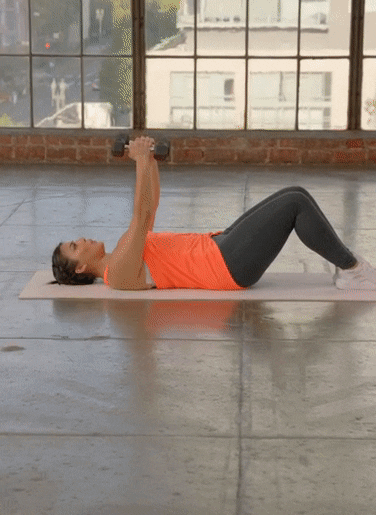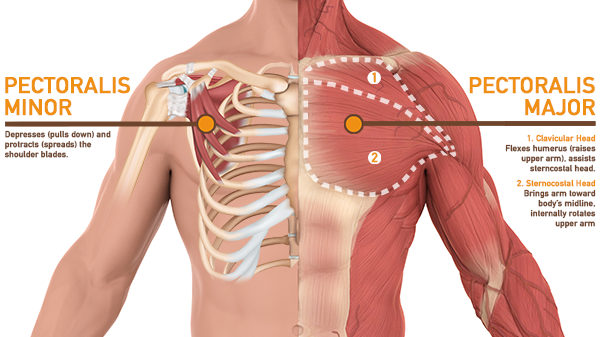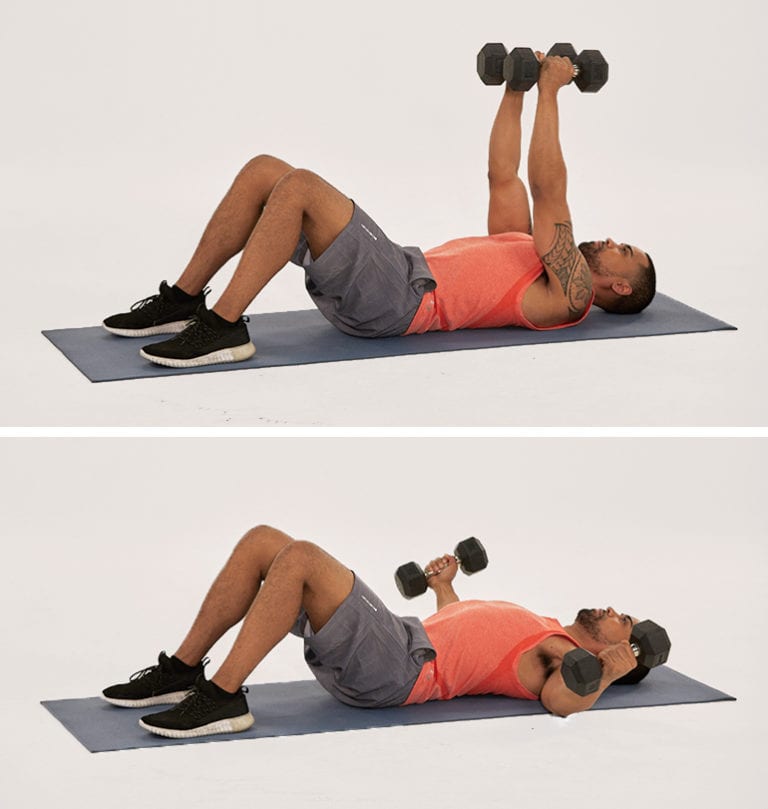To many fitness pros, building powerful, heaving chest muscles begins and ends with pressing movements: the bench press; the push-up; the incline bench press.
But if you’ve benched till you’re bored and push-upped till you’re purple, what else can you do to pump up your pectorals?
Outside of these evergreen — and effective — moves, the dumbbell chest fly, long a mainstay for bodybuilders and other physique athletes, is your best bet for a strong, well-developed chest.
“The most direct way to stimulate your chest muscles is with exercises in which you draw your arms toward your midline,” says ISSA Master Trainer Angelo Poli, owner of Whole Body Fitness in Chico, CA. “That’s exactly what the dumbbell chest fly does.”
Flys aren’t the best choice for people with dicey shoulders, Poli concedes — those folks are better off sticking with push-up variations.
But for everyone else, the dumbbell chest fly makes a great addition to a complete chest workout.
Here’s how to pull off this classic muscle-building move.
Dumbbell Chest Fly: Step-by-Step Instructions
- Lie back on a flat bench (you can also do this laying on the ground, as is shown above), holding a pair of dumbbells at arm’s length over your chest, palms facing each other. (If this is your first time, select dumbbells that weigh about half of what you would use for presses).
- Keeping your elbows slightly bent, slowly lower the dumbbells directly out to your sides until you feel a deep stretch in your chest.
- Pause, then slowly reverse the move, returning to the starting position.
Trainer tip: Tolerance for the fully-stretched position can vary. If your shoulders hurt when you lower the weights fully, limit the range of motion to what you can do without pain.
Also, performing flys with straight arms is never a good idea: The muscles are stretched at both ends, making them especially vulnerable to straining or tearing.
What Muscles Does the Dumbbell Chest Fly Work?
The major muscles recruited in this move overlap with your pushing muscles.
1. Pectoralis major: The twin, fan-shaped muscles on the front of your rib cage are the prime movers in this exercise.
They work to draw your arms from the abducted (wide open) position toward the midline of your chest.
The pec major has two heads: The sternal, or lower, head works hardest when you perform the movement on a flat or decline bench.
The clavicular, or upper, head is maximally targeted by working from an inclined position.
2. Deltoids: The anterior heads of your shoulder muscles assist your pectorals in drawing your arms across your body, particularly at an upward angle, as in the incline-bench version of the move.
3. Biceps: Your “make a muscle” muscles contract isometrically during flys, stabilizing your shoulder joint and forearm as you lower the weights.
How Good Is the Dumbbell Fly at Building the Chest?
Unlike compound exercises like presses and push-ups — which call on your triceps, shoulders, and back muscles for help — the dumbbell chest fly is a single-joint movement, whose focus is almost exclusively the pectorals.
For people trying to improve the appearance of their chest — particularly those who have trouble feeling their pectorals working in compound movements — that’s a huge benefit.
The line of stress in the exercise also closely parallels the path of the muscle fibers. That makes the dumbbell fly among the most direct chest-builders you can do.
It’s also highly versatile.
“At the end of a chest workout, you can use the move as a finisher to squeeze every ounce of work out of the muscle before calling it quits for the day,” says Poli.
Final advantage of the chest fly? It’s fun.
Squats, lunges, and pull-ups may get the edge for sweat-pouring intensity, but pumping up your pecs with a classic single-joint exercise that’s helped build some of the most famous chests in history? Who can resist?
The post How to Do the Dumbbell Chest Fly for Peak Pec Development appeared first on The Beachbody Blog.




0 Comments